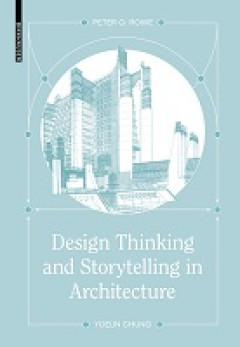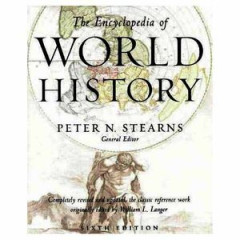Ditapis dengan

E-book Design Thinking and Storytelling in Architecture
This book offers a systematic account of the process of designing in architecture. Design thinking can be regarded as a fundamentally different way of knowing the world and a particular form of addressing creative problems. In this publication, the authors undertake to explore multiple and often controversial theoretical stances on the topic. Underlying principles of inquiry are present in all …
- Edisi
- -
- ISBN/ISSN
- 9783035628111
- Deskripsi Fisik
- 168 halaman
- Judul Seri
- -
- No. Panggil
- 720.6 ROW d
E-book The Jesus Mysteries
- Edisi
- -
- ISBN/ISSN
- 0722536771
- Deskripsi Fisik
- 256 halaman
- Judul Seri
- -
- No. Panggil
- 232 FRE t
- Edisi
- -
- ISBN/ISSN
- 0722536771
- Deskripsi Fisik
- 256 halaman
- Judul Seri
- -
- No. Panggil
- 232 FRE t
E-book Ocean: The Definitive Visual Guide
- Edisi
- -
- ISBN/ISSN
- 9871465419682
- Deskripsi Fisik
- 514 halaman, ilus.
- Judul Seri
- -
- No. Panggil
- 577.73 FRA o
- Edisi
- -
- ISBN/ISSN
- 9871465419682
- Deskripsi Fisik
- 514 halaman, ilus.
- Judul Seri
- -
- No. Panggil
- 577.73 FRA o
E-book Electoral Management Design
The credibility and legitimacy of electoral processes is inextricably linked to electoral integrity. The Global Commission on Democracy, Elections and Security identified five major challenges to the conduct of elections with integrity in its 2012 report: building the rule of law to substantiate claims to human rights and electoral justice, developing professional and competent electoral manage…
- Edisi
- revised ed.
- ISBN/ISSN
- 9789187729669
- Deskripsi Fisik
- 480 hlm
- Judul Seri
- -
- No. Panggil
- 324.6 CAT e
E-book The Global E-waste Monitor 2020 : Quantities, Flows, and The Circular …
This monitor provides the most comprehensive update of global e-waste statistics. In 2019, the world generated a striking 53.6 Mt of e-waste, an average of 7.3 kg per capita. The global generation of e-waste grew by 9.2 Mt since 2014 and is projected to grow to 74.7 Mt by 2030 – almost doubling in only 16 years. The growing amount of e-waste is mainly fueled by higher consumption rates of EEE…
- Edisi
- -
- ISBN/ISSN
- 9789280891140
- Deskripsi Fisik
- 120 hlm
- Judul Seri
- -
- No. Panggil
- 628.4 FOR t

E-Book The Encyclopedia of World History: Ancient, Medieval, and Modern - Six…
Renowned historian Peter N. Stearns and thirty prominent historians have combined their expertise over the past ten years to perfect this comprehensive chronology of more than 20,000 entries that span the millennia from prehistoric times to the year 2000.
- Edisi
- -
- ISBN/ISSN
- 0227679687
- Deskripsi Fisik
- 3540 halaman
- Judul Seri
- -
- No. Panggil
- 903 STE t
E-book Textbook of Plastic and Reconstructive Surgery
Plastic and reconstructive surgery is a branch of surgery that specialises in restoring form and function to damaged or missing tissues and skin. The causes of such defects are usually related to surgery, injury, illness or congenital abnormality. This rapidly evolving specialty is based upon the exploitation of key principles of anatomy, physiology, pathology and surgery. Mastery of these prin…
- Edisi
- -
- ISBN/ISSN
- 9781910634394
- Deskripsi Fisik
- 491 hlm
- Judul Seri
- -
- No. Panggil
- 617.95 ADI t
E-Book Visnu-Narayana: Changing Forms and the Becoming of a Deity in Indian R…
The contributions collected in this volume deal with the complex history of the Indian deity Vi??u-N?r?yana. This conception of God evolved in various traditions in India, especially in South India, during the first millennium CE. The history of this development is reconstructed here by various means, including philological exegesis, the history of ideas, and iconographic evidence.
- Edisi
- -
- ISBN/ISSN
- -
- Deskripsi Fisik
- 502 halaman
- Judul Seri
- -
- No. Panggil
- 294.5 SCH v
E-book Botany Illustrated : Introduction to Plants, Major Groups, Flowering P…
The major category is called a division and is equivalent to phylum in the animal kingdom. Division name endings indicate plants (-phyta) and fungi (-mycota). In the top illustration are some examples of Magnoliophyta, the flowering plant division. The endings of lesser categories indicate class (-opsida), subclass (-idea), order (-ales), and family (-aceae). Classification of one specific plan…
- Edisi
- -
- ISBN/ISSN
- 0387288759
- Deskripsi Fisik
- 291 hlm
- Judul Seri
- -
- No. Panggil
- 580 GLI b
E-book Handbook of Herbs and Spices
The history of herbs and spices is as long as the history of mankind. People have used these plants since earliest times. No other commodity has played a more pivotal role in the development of modern civilization as spices. The lives of people and plants are more entwined than is often realized. Some herbs have the power to change our physiological functioning, they have revolutionized medicin…
- Edisi
- Vol. 2
- ISBN/ISSN
- 185573835X
- Deskripsi Fisik
- 365 hlm
- Judul Seri
- -
- No. Panggil
- 635.7 PET h
 Karya Umum
Karya Umum  Filsafat
Filsafat  Agama
Agama  Ilmu-ilmu Sosial
Ilmu-ilmu Sosial  Bahasa
Bahasa  Ilmu-ilmu Murni
Ilmu-ilmu Murni  Ilmu-ilmu Terapan
Ilmu-ilmu Terapan  Kesenian, Hiburan, dan Olahraga
Kesenian, Hiburan, dan Olahraga  Kesusastraan
Kesusastraan  Geografi dan Sejarah
Geografi dan Sejarah